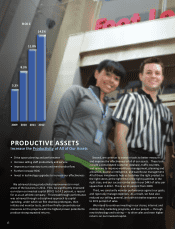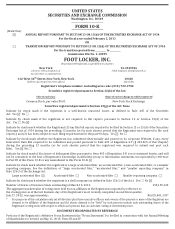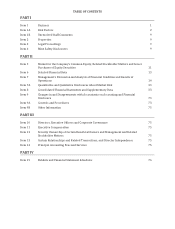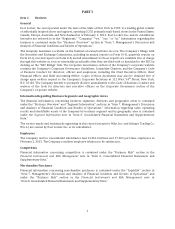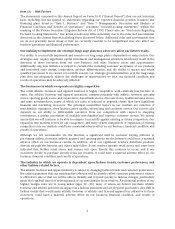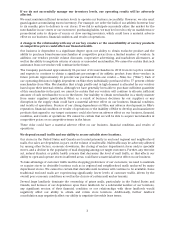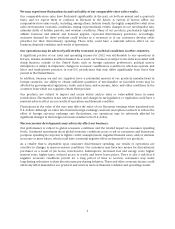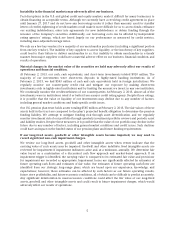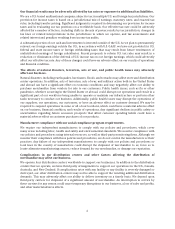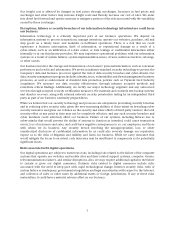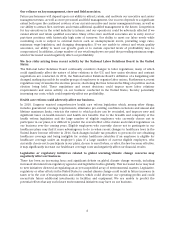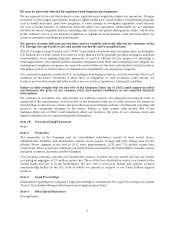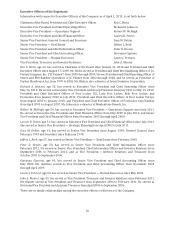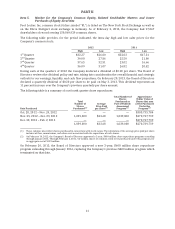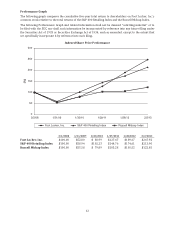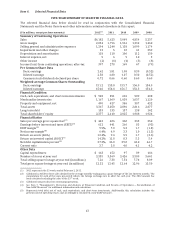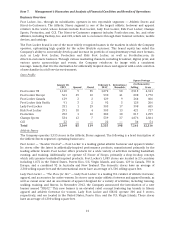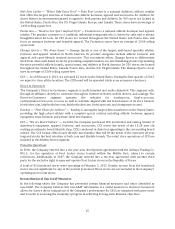Foot Locker 2012 Annual Report Download - page 25
Download and view the complete annual report
Please find page 25 of the 2012 Foot Locker annual report below. You can navigate through the pages in the report by either clicking on the pages listed below, or by using the keyword search tool below to find specific information within the annual report.Instability in the financial markets may adversely affect our business.
Past disruptions in the U.S. and global credit and equity markets made it difficult for many businesses to
obtain financing on acceptable terms. Although we currently have a revolving credit agreement in place
until January 27, 2017 and do not have any borrowings under it (other than amounts used for standby
letters of credit), tightening of credit markets could make it more difficult for us to access funds, refinance
our existing indebtedness, enter into agreements for new indebtedness or obtain funding through the
issuance of the Company’s securities. Additionally, our borrowing costs can be affected by independent
rating agencies’ ratings, which are based largely on our performance as measured by credit metrics,
including lease-adjusted leverage ratios.
We rely on a few key vendors for a majority of our merchandise purchases (including a significant portion
from one key vendor). The inability of key suppliers to access liquidity, or the insolvency of key suppliers,
could lead to their failure to deliver merchandise to us. Our inability to obtain merchandise in a timely
manner from major suppliers could have a material adverse effect on our business, financial condition, and
results of operations.
Material changes in the market value of the securities we hold may adversely affect our results of
operations and financial condition.
At February 2, 2013, our cash, cash equivalents, and short-term investments totaled $928 million. The
majority of our investments were short-term deposits in highly-rated banking institutions. As of
February 2, 2013, we had $543 million of cash and cash equivalents held in foreign jurisdictions. We
regularly monitor our counterparty credit risk and mitigate our exposure by making short-term
investments only in highly-rated institutions and by limiting the amount we invest in any one institution.
We continually monitor the creditworthiness of our counterparties. At February 2, 2013, almost all of the
investments were in institutions rated A or better from a major credit rating agency. Despite those ratings,
it is possible that the value or liquidity of our investments may decline due to any number of factors,
including general market conditions and bank-specific credit issues.
Our U.S. pension plan trust holds assets totaling $585 million at February 2, 2013. The fair values of these
assets held in the trust are compared to the plan’s projected benefit obligation to determine the pension
funding liability. We attempt to mitigate funding risk through asset diversification, and we regularly
monitor investment risk of our portfolio through quarterly investment portfolio reviews and periodic asset
and liability studies. Despite these measures, it is possible that the value of our portfolio may decline in the
future due to any number of factors, including general market conditions and credit issues. Such declines
could have an impact on the funded status of our pension plans and future funding requirements.
If our long-lived assets, goodwill or other intangible assets become impaired, we may need to
record significant non-cash impairment charges.
We review our long-lived assets, goodwill and other intangible assets when events indicate that the
carrying value of such assets may be impaired. Goodwill and other indefinite lived intangible assets are
reviewed for impairment if impairment indicators arise and, at a minimum, annually. We determine fair
value based on a combination of a discounted cash flow approach and market-based approach. If an
impairment trigger is identified, the carrying value is compared to its estimated fair value and provisions
for impairment are recorded as appropriate. Impairment losses are significantly affected by estimates of
future operating cash flows and estimates of fair value. Our estimates of future operating cash flows are
identified from our strategic long-range plans, which are based upon our experience, knowledge, and
expectations; however, these estimates can be affected by such factors as our future operating results,
future store profitability, and future economic conditions, all of which can be difficult to predict accurately.
Any significant deterioration in macroeconomic conditions could affect the fair value of our long-lived
assets, goodwill and other intangible assets and could result in future impairment charges, which would
adversely affect our results of operations.
5



